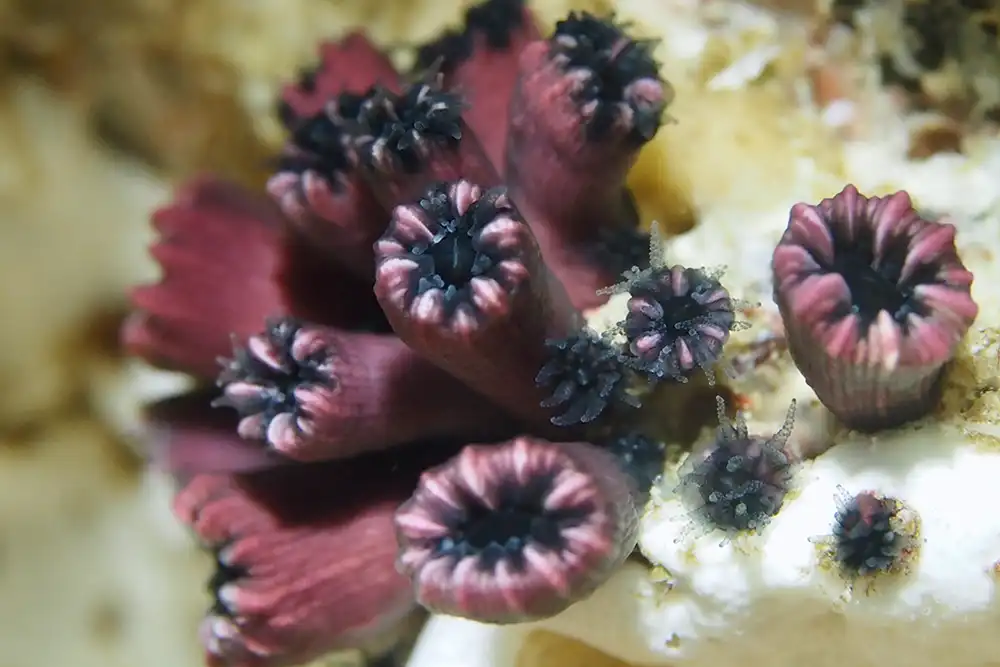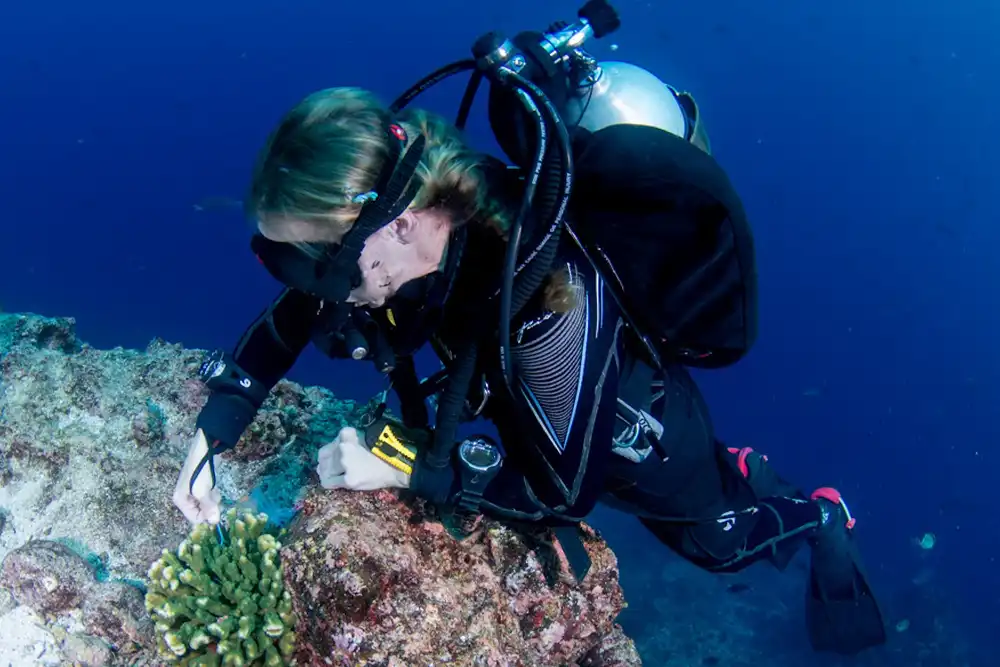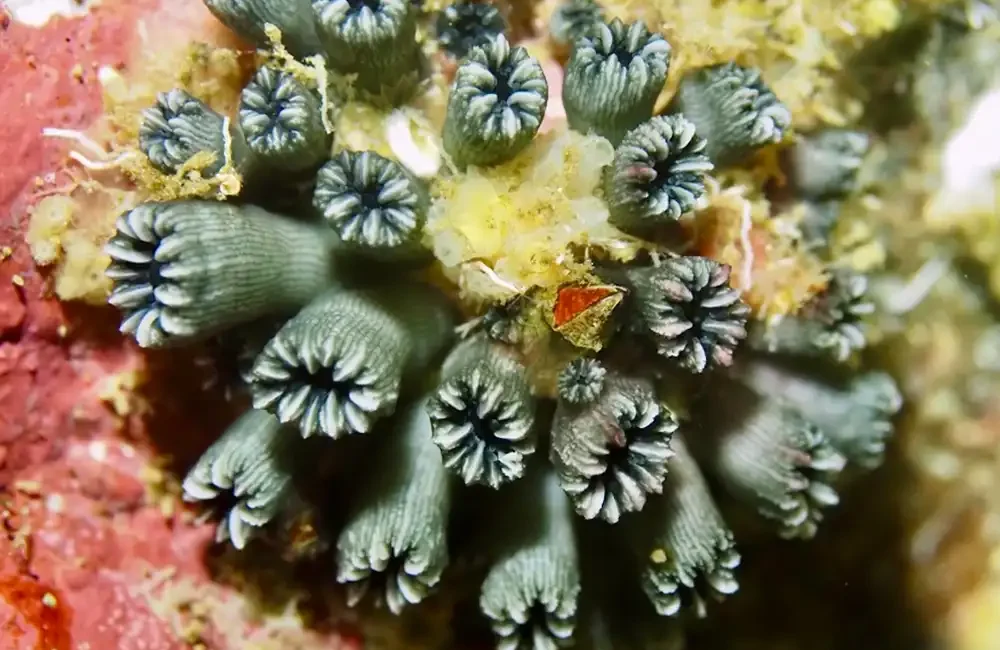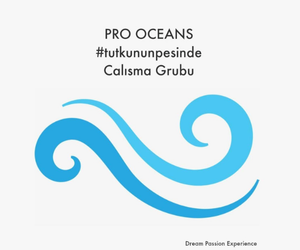By DIVE Staff
A species of stony coral thought to be extinct has been spotted in the Galápagos Islands for the first time in 24 years, according to a new study published in the journal Marine Biology.
A team of divers, comprising scientists from the California Academy of Sciences, Charles Darwin Foundation (CDF) and the Galápagos National Park Directorate (GPND) recorded more than 250 colonies of Wellington’s solitary coral (Rhizopsammia wellingtoni) across four different sites in the Galápagos National Park.
First discovered in 1975 and endemic to the Galápagos, R. wellingtoni was last spotted in 2000 and classified as Critically Endangered (Possibly Extinct) by the IUCN Red List of Threatened Species in 2007.
The coral was rediscovered in January 2024 near Tagus Cove on the largest of the Galápagos Islands, Isabela, the location where it was originally discovered.

Further surveys found a second colony off Isabela Island, and a third was discovered off Isla Fernandina, a smaller island which lies approximately 2km directly west of Tagus Cove.
‘Finding something that was previously thought to be extinct is one of the most exciting discoveries a biologist can make,’ said Terry Gosliner, one of the study’s co-authors.
‘In just one dive, we found more than 100 colonies of R. wellingtoni on a healthy, biologically diverse rocky reef, many of which were dotted with budding polyps, signalling active reproduction.
‘This is huge: evidence that the species isn’t merely clinging to survival, but thriving at multiple localities and depths. This discovery is a hopeful example of resilience amid rising ocean temperatures, and a poignant reminder of what can be gained from continued conservation and reef monitoring in biodiversity hotspots like the Galápagos.’
Wellington’s solitary coral is a species of scleractinia (stony coral) that forms small colonies in the relatively cool waters that surround the Galápagos Islands.

It had previously been thought of as a primarily shallow-water species; however, recent ROV surveys have found it also inhabits deeper reefs in the ‘mesophotic zone’ – depths from 60 to 150 metres where some corals persist despite the low light penetration.
The coral was spotted regularly ‘in moderate abundance’ at several locations around at least six different Galápagos islands and islets, but sightings declined dramatically following the warmer waters brought about during the 1982-83 El Niño event.
Surveys conducted by scientists from the Charles Darwin Foundation, who have been monitoring 64 Galápagos reef sites since 2004, suggest that cooler La Niña conditions between 2020 and 2023 may have helped the coral to re-establish itself in the shallow water.
‘Finding R. wellingtoni after 24 years raises important questions about how the coral survived past environmental pressures, such as the severe 1982-1983 El Niño, suggesting it might have found refuge in deeper, cooler habitats before re-emerging during recent cooler La Niña conditions,’ said lead author of the study Inti Keith.
‘It also proves that even the most vulnerable species can persist if we protect the right habitats – yet its tiny, scattered colonies remind us just how close we came to losing it forever and the critical need for proactive management strategies.’

The scientists collected tissue samples from the rediscovered coral for genetic testing at the California Academy’s Coral Regeneration Lab.
There, they hope to sequence the samples to better understand the genetic diversity of the colonies, which may provide insight as to how they were able to survive the changeable conditions and water temperatures of the region.
‘We’re excited to see what further genetic analysis might reveal about this rebounding coral species,’ said study co-author Rebecca Albrite.
‘These tests will also determine how the newly discovered coral colonies are connected, offering key insights for conservation.
‘By understanding how diverse existing populations are, we can better predict how well they might repopulate areas affected by environmental changes and respond to future stress.’
The complete study ‘Rediscovery of Rhizopsammia wellingtoni in Galápagos after two decades’ by Inti Keith, Terry Gosliner and Rebecca Albright is available under an open-access license in Marine Biology
The post Coral ‘presumed exctinct’ rediscovered in Galápagos appeared first on DIVE Magazine.




